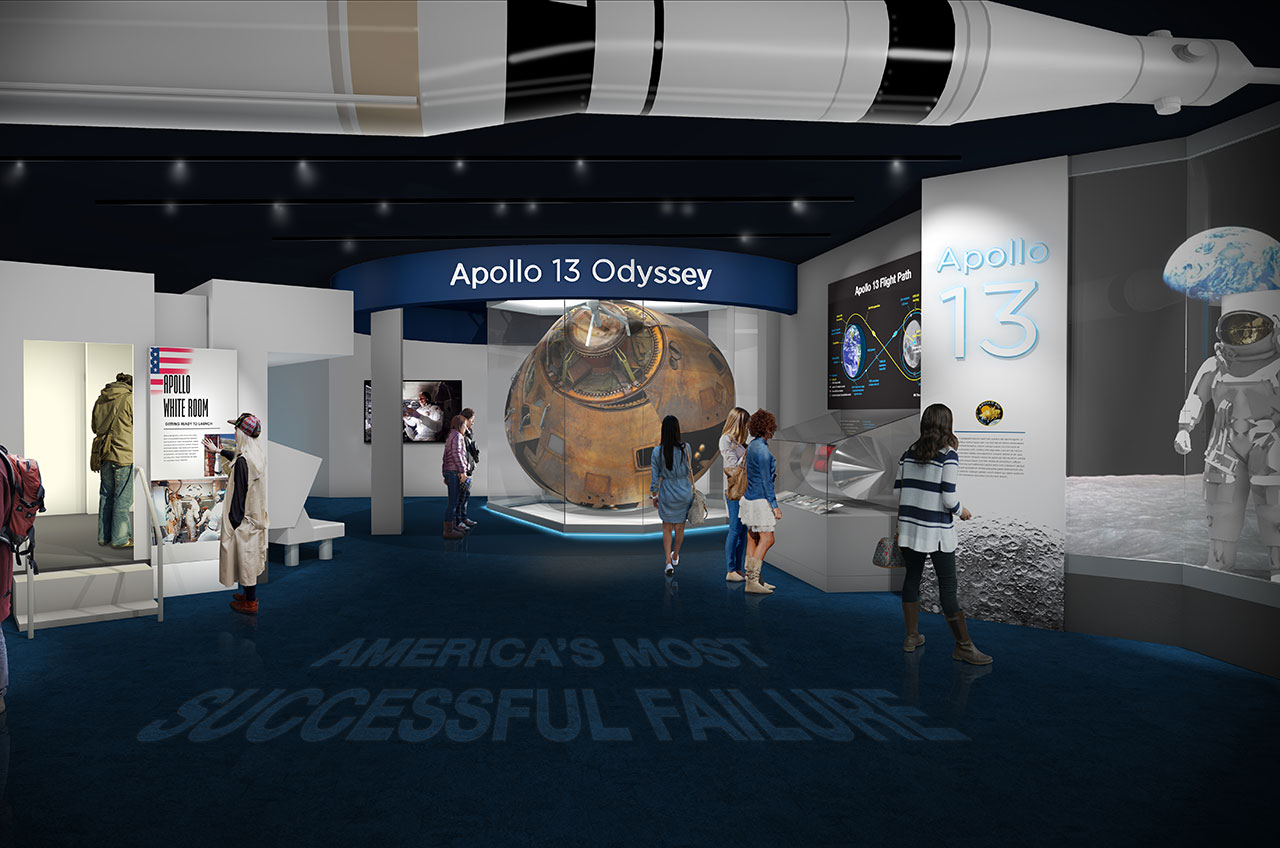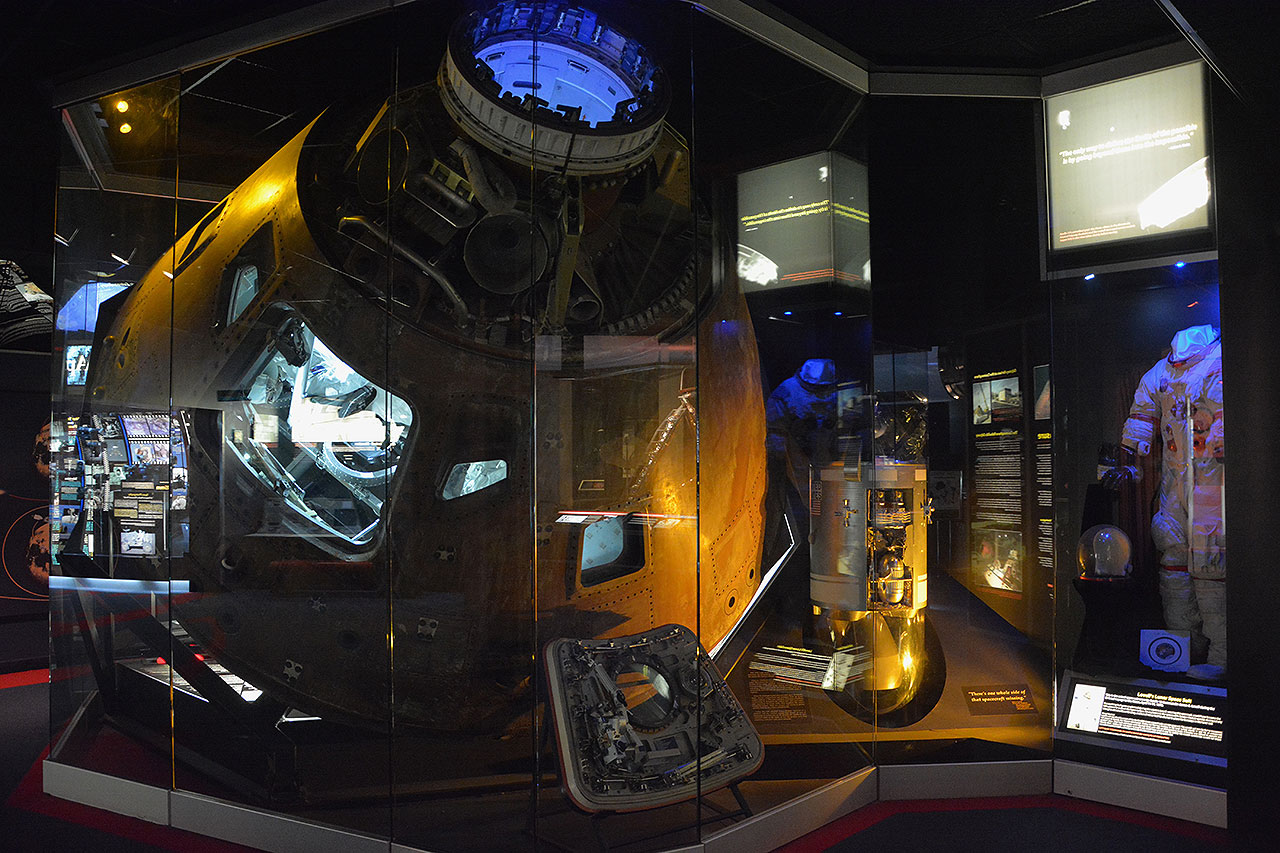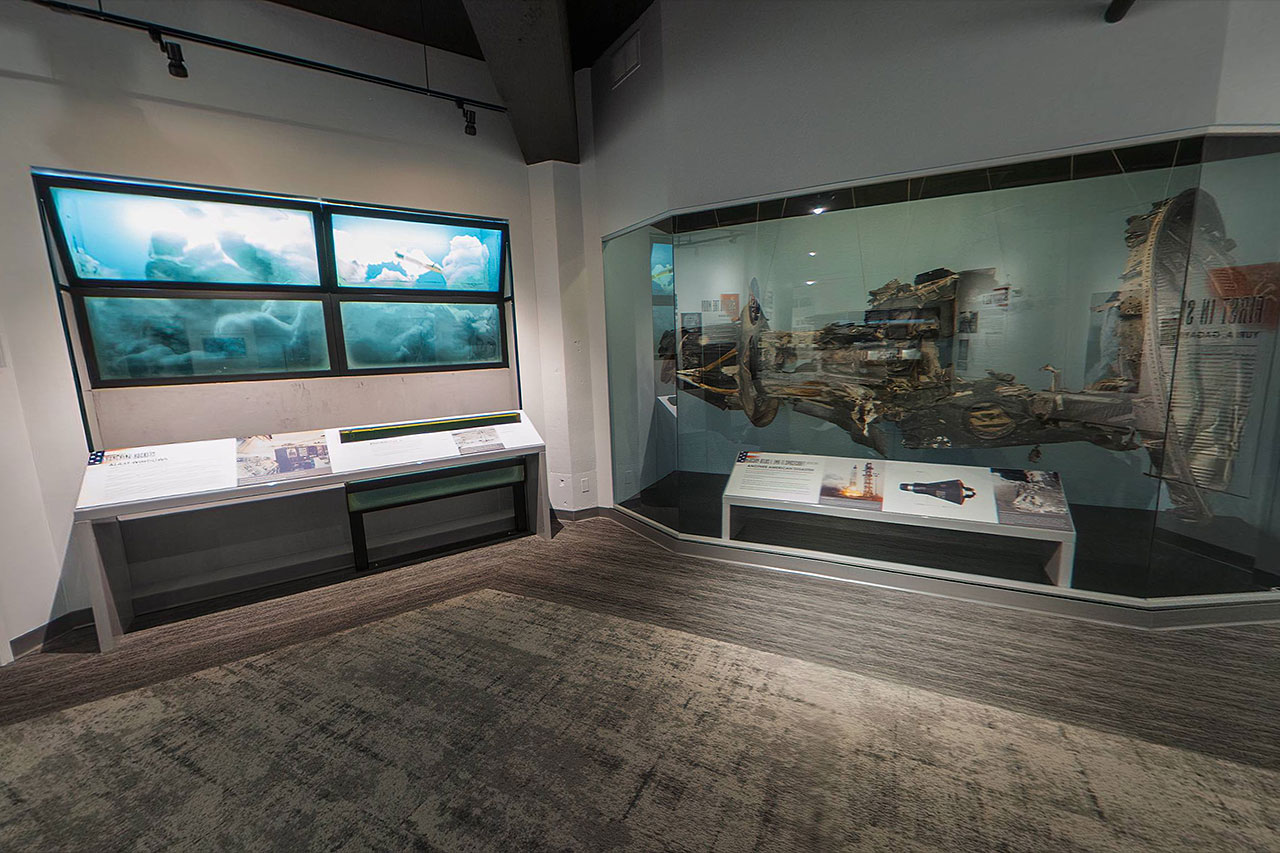World-renowned spaceflight museum set for renovation at Cosmosphere
'[This] will provide visitors with the same continuous story, but just do it in a more engaging way.'

The home of a famously sunken Mercury capsule and the spacecraft that brought the Apollo 13 crew back to Earth is getting an upgrade.
The Cosmosphere, a world-class space museum located in Hutchinson, Kansas, announced this week that it is ready to continue with the redesign and renovation of its Hall of Space, a series of galleries that together allows visitors to step back through the history of space exploration by way of an extensive artifact collection.
"We have done about a third of the museum, so starting with the V-2 Gallery, up through about 1961 and the Mercury-Atlas 1 capsule," Jim Remar, president and CEO of the Cosmosphere, said in an interview with collectSPACE.com. "We are now going back in and doing the final two thirds."
The work, which is set to get underway this month and be completed before the end of the year, encompasses some of the Cosmosphere's most popular exhibits, including the Mollett Early Spaceflight Gallery that opened in 2005 and the Apollo Gallery, with its unrivaled array of moon landing memorabilia. When done, the renovations will deliver a new sense of continuity when walking through the Hall's chronological presentations.
"What we're doing is creating a uniform look and feel," said Remar. "We're going to have similar graphic treatments, similar wayfinding audio and visuals. It will also open up a new brightness to the displays, so it will provide visitors with the same continuous story, but just do it in a more engaging way."
Related: Facts about NASA's Apollo program

Designed at different points during the Cosmosphere's own 60-year history, the galleries up to now have featured different aesthetics. The Apollo Gallery, for example, is dimly lit and sets its artifacts against dark backgrounds, evoking the blackness of space. By comparison, the Early Spaceflight Gallery, as the newest of the exhibitions to open, uses blue and red lighting to set apart the efforts of the United States and the former Soviet Union in the early years of the space race.
The hall's new look, as can already be seen in the completed V-2 Gallery and in renderings of the soon-to-be-redesigned rooms, opts for white and azure (or sky blue) backdrops set against darker blue or gray flooring. Black ceilings still provide a nod to the relationship the artifacts have with outer space.
"We are also incorporating a little more AV, as well as some interactivity into the gallery spaces," Remar said.
Visitors will soon be able to step onto a haptic plate to feel what happens when a rocket engine ignites and adjust the flow and aerodynamics around a vehicle while viewing the original model built to do just with the Mercury capsule.
"We'll also have a [new] replica command module placed up against the [Apollo-era] White Room to provide visitors with the sense of how the spacecraft and its entranceway connected and how the astronauts entered the command module for launch," Remar told collectSPACE. "So, a lot of fun and an opportunity for visitors to really be immersed in a great environment."

During the renovations, the plan is to keep as many of the Cosmosphere's iconic artifacts on public display as possible.
"It will be a rolling closure," said Remar. "Obviously when people come here, they do want to see [the Apollo 13 command module] 'Odyssey,' they do want to see [Gus Grissom's recovered Mercury capsule] 'Liberty Bell 7,' so we will try to keep those two iconic artifacts on display as long as we possibly can. There will be a period, obviously, during some of the demo and construction when we will have to take them off of exhibit, but that will be minimal."
Coinciding with the closures will be the opening of new exhibits in the public areas outside of the Cosmosphere's Justice Planetarium and Dr. Goddard's Lab interactive theater. Visitors will also still be able to enjoy films in the Carey Digital Dome Theater and take part in STEM activities in the CosmoKids area, as well as the shows in the planetarium and Dr. Goddard's Lab.
"We are also upgrading the public spaces in front of Dr. Goddard's Lab and the planetarium, we're taking care of some deferred maintenance and we're painting the exterior of the facility and the rockets," said Remar. "All told, we were able to raise about $4.7 million for the Hall of Space renovations and these projects."
In particular, funds were provided through federal appropriations spearheaded by Senator Jerry Moran, a SPRINT (State Park Revitalization and Investment in Notable Tourism) grant and most recently a significant donation from the Kansas City-based Sunderland Foundation.
Follow collectSPACE.com on Facebook and on Twitter at @collectSPACE. Copyright 2024 collectSPACE.com. All rights reserved.
Get the Space.com Newsletter
Breaking space news, the latest updates on rocket launches, skywatching events and more!
Join our Space Forums to keep talking space on the latest missions, night sky and more! And if you have a news tip, correction or comment, let us know at: community@space.com.

Robert Pearlman is a space historian, journalist and the founder and editor of collectSPACE.com, a daily news publication and community devoted to space history with a particular focus on how and where space exploration intersects with pop culture. Pearlman is also a contributing writer for Space.com and co-author of "Space Stations: The Art, Science, and Reality of Working in Space” published by Smithsonian Books in 2018.In 2009, he was inducted into the U.S. Space Camp Hall of Fame in Huntsville, Alabama. In 2021, he was honored by the American Astronautical Society with the Ordway Award for Sustained Excellence in Spaceflight History. In 2023, the National Space Club Florida Committee recognized Pearlman with the Kolcum News and Communications Award for excellence in telling the space story along the Space Coast and throughout the world.










